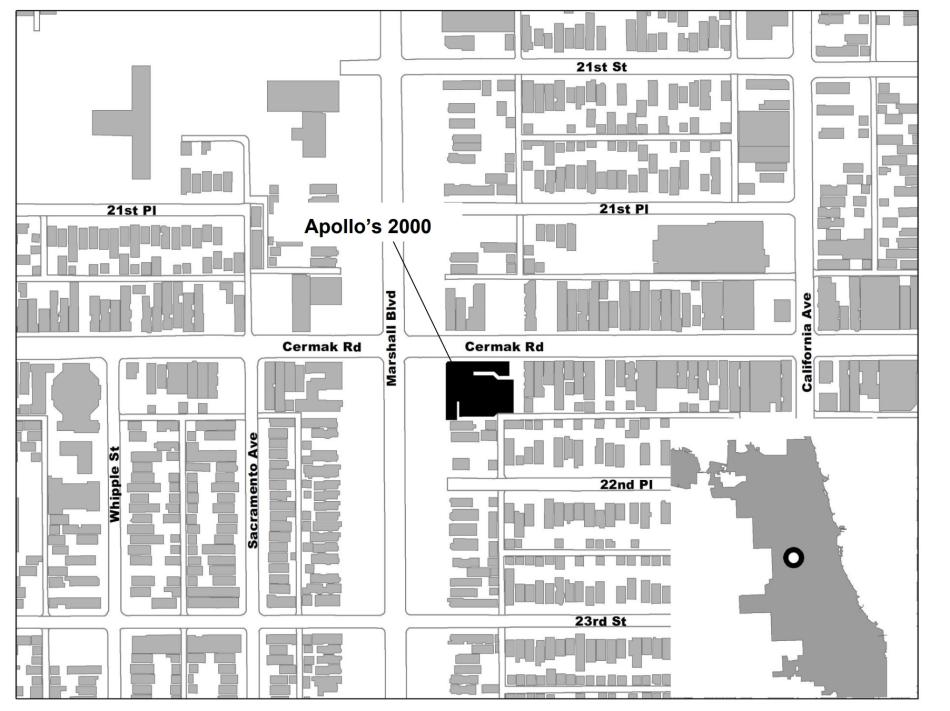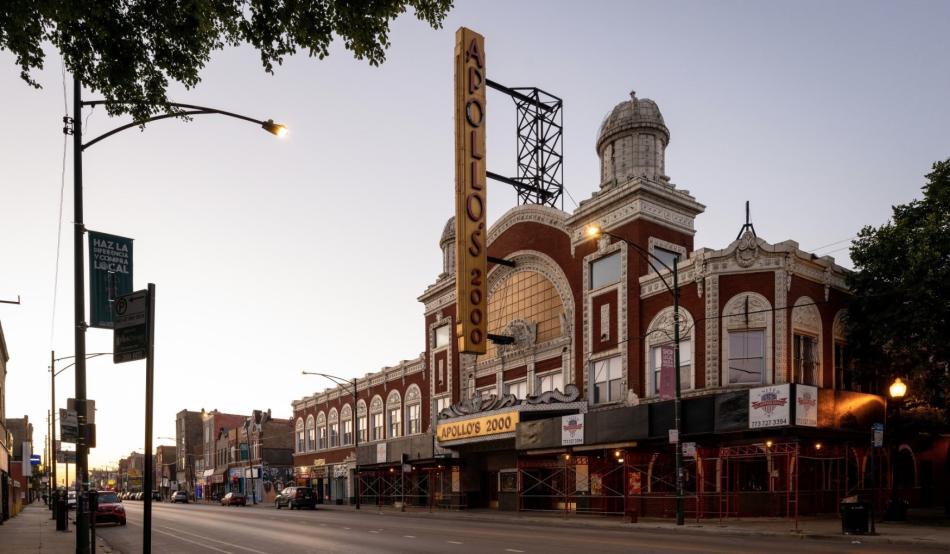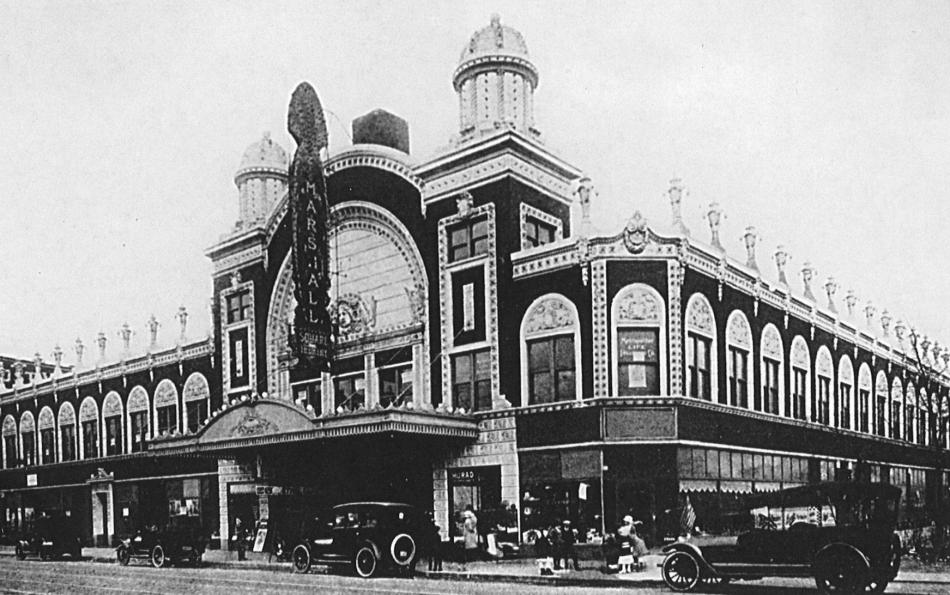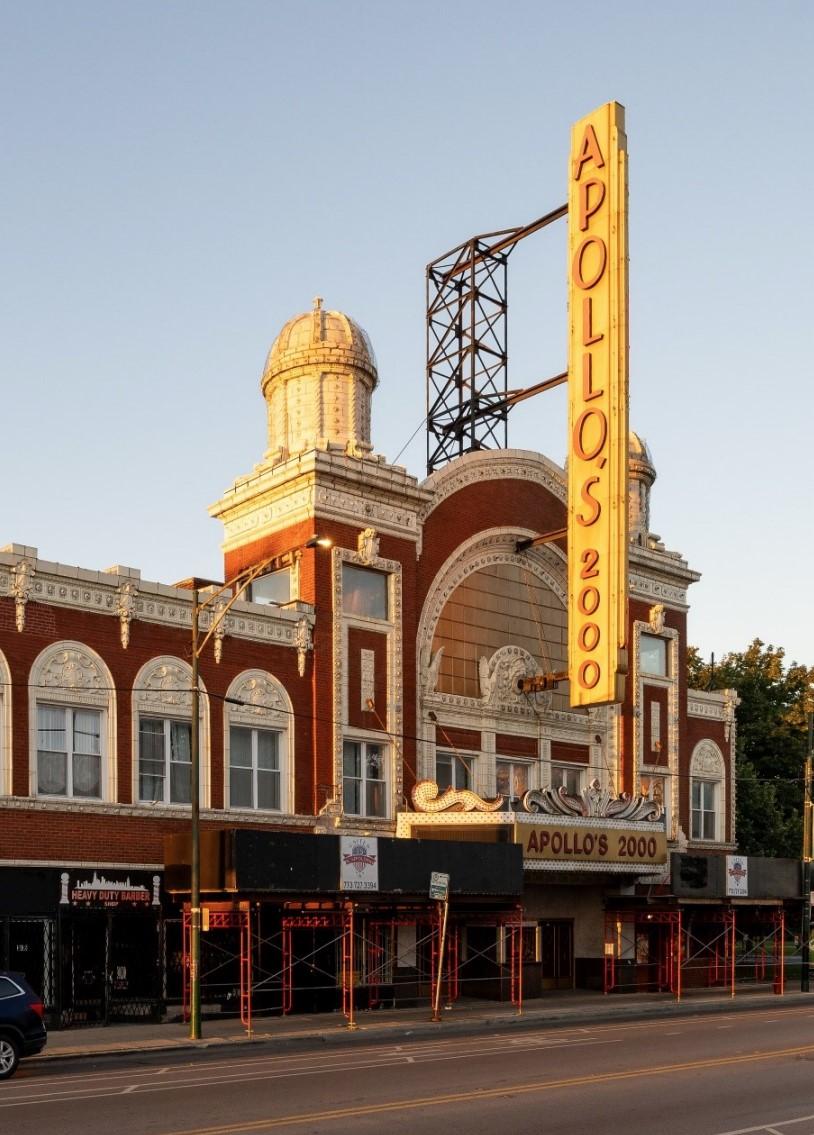The Chicago City Council has approved the landmark designation of Apollo’s 2000. Located at 2875 W. Cermak, the popular performance and event venue was formerly known as Marshall Square Theatre and was built in 1917 by architect Alexander L Levy.
Apollo’s 2000 is the last surviving theater commissioned by Louis and Meyer Marks, Chicago movie exhibitors and theater builders whose business began with a nickelodeon in 1910 to building two of Chicago largest movie palaces, the Granada and Marbro theater in the late 1920s. Since 1990, Apollo’s 2000 has transformed the historic theater to an event and performance space that contributes to the cultural landscape of Little Village and Chicago’s wider Hispanic community by promoting Latin music, lectures and supporting local non-profit organizations.
Apollo’s 2000 showcased Spanish Rock bands in the 1990s, a time when this popular genre was overlooked by Chicago promoters. In addition to Spanish Rock, Apollo’s 2000 has hosted performances from other genres of Latin music, including Spanish Pop, Latin Jazz, Cuban, and Mexican regional musical styles. Apollo’s 2000 has also hosted numerous politicians seeking to reach out to the Latino community, including Vice President Al Gore, former Governor Pat Quinn, Congressman Jesús “Chuy” García, and Senator Bernie Sanders.
The former Marshall Square Theatre is a significant transitional motion picture theater in Chicago from 1917 spanning the small nickelodeons that came before it and the larger and more elaborate movie palaces of the 1920s. With its large arch framed by domed towers, as well as its sculptural eagles, and its ornament derived from classicism, the building is a fine example of Beaux-Arts Architecture applied to an early motion picture theater. The scale and ornate quality of the building’s architecture, on both its interior and exterior, reflect the ideals of historic movie theater design to use architecture as advertisement and to attract customers with a promise of luxury and escape from the ordinary.
As a 107-year-old motion picture theater, Apollo’s 2000 retains sufficient physical integrity to convey its historic and architectural value. Changes to the exterior of the building include refacing of the blade sign and evolution of the marquee, which are common changes to historic movie theaters which frequently updated marquees and signage. Other changes to the exterior include new exterior doors, windows and storefront alterations. These changes are typical for commercial buildings and do not impair the building’s ability to convey its value.
Alterations to the interior of the auditorium were implemented in 1990 to convert the space from a cinema to an event and performance venue. The original seating was removed, the sloped floor was reconfigured with multiple levels, the stage was expanded, and stage lighting was added. These changes have allowed the building to be profitably reused and do not interfere with the architectural quality of the auditorium which is retained in its overall volume as well as ceiling and wall ornamentation. To a lesser degree, the lobby floor has been replaced and interior passage doors from the lobby to the auditorium have been removed. These changes also do not compromise the lobby’s richly ornamented wall and ceiling finishes.
The significant features of the building will be all exterior elevations, including rooflines, of the building, the interior lobby, and the interior of the auditorium. The blade sign and marquee have always been part of the building’s exterior elevations. As with many historic theaters, these features have evolved over time in terms of size, material and illumination. The Commission’s review of work proposed to the blade sign or marquee will ensure that these continue to be features of the building, while allowing reasonable change and flexibility to meet new needs. 1990 changes to the interiors of the lobby and auditorium, including floor finishes, new floor platforms, three bars, neon lighting, chandeliers, stage lighting and its ceiling-mounted trusses, cameras, screens, and bathrooms are specifically excluded from the significant historical and architectural features.













